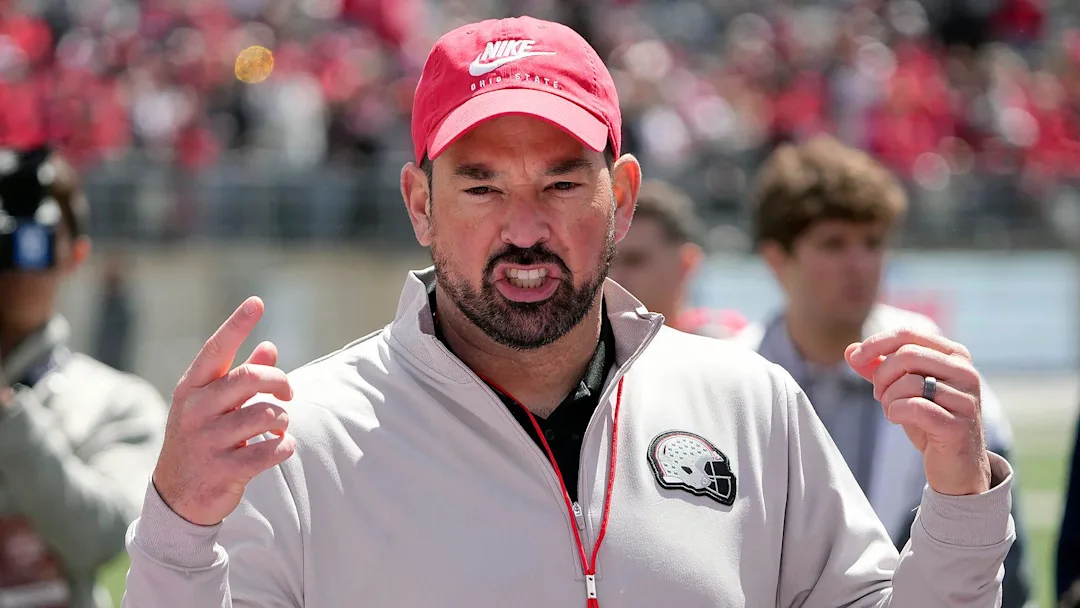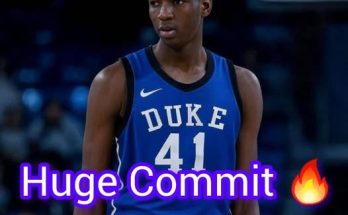Pressure intensifies on Ryan Day and Ohio State as the race heats up to secure a coveted 5-star quarterback recruit. In the hyper-competitive world of college football recruiting, landing elite talent at the quarterback position has never been more critical, and Ohio State finds itself squarely in the spotlight as it pursues one of the nation’s most sought-after high school signal-callers. The Buckeyes, under the leadership of head coach Ryan Day, have built a reputation for developing top-tier quarterbacks who excel both in college and at the professional level, which makes their interest in this recruit natural and strategic. However, with intense competition from other powerhouse programs, every decision, every conversation, and every recruitment visit carries enormous weight in determining the future of the Buckeyes’ offense and, more broadly, the trajectory of their program.
In recent years, Ohio State has demonstrated an uncanny ability to attract and nurture elite quarterback talent, including names like Justin Fields and C.J. Stroud, who have not only shone in the collegiate ranks but have also made significant marks in the NFL draft. Ryan Day’s offensive scheme, which blends high-octane passing with a dynamic running game, offers an appealing environment for quarterbacks looking to develop a versatile skill set. This reputation is a key selling point for the Buckeyes in the recruitment process, as prospects seek a program that can prepare them for success beyond college. The current 5-star recruit under consideration is no exception, and the mounting pressure on Day and his staff stems largely from the urgency to convince this young athlete that Ohio State is the ideal place to continue his football journey.
The recruitment battle for a 5-star quarterback is never a simple one. The athlete’s decision hinges on multiple factors—coaching relationships, offensive schemes, playing time opportunities, program culture, proximity to home, academic considerations, and potential for national exposure. For Ohio State, balancing these factors while facing stiff competition from other elite programs such as Alabama, Georgia, LSU, and Texas means that the coaching staff must be at the top of their game. Ryan Day and his recruiting team have been actively engaging with the recruit’s family and high school coaches, emphasizing not only the Buckeyes’ rich football history but also the personal development opportunities available at Ohio State. The goal is to build a genuine connection and show a long-term commitment that extends beyond just football.
Yet, the pressure on Ryan Day is not solely about winning the recruitment battle for one player; it reflects a broader expectation from fans, alumni, and the program itself to maintain Ohio State’s status as a national powerhouse. Quarterback is arguably the most pivotal position in football, and securing a future star at that spot often correlates directly with championship aspirations. The looming presence of other programs aggressively courting the same recruit means that Day’s approach must be meticulous and convincing. Missed opportunities or perceived missteps could lead to losing not only this recruit but also momentum in future recruiting classes. The stakes are enormous, and the national spotlight only amplifies the pressure to get it right.
Ohio State’s track record of quarterback success is both a blessing and a burden. While it reassures recruits that they will be joining a program with proven developmental success, it also sets a high bar for every new recruit to meet or exceed. Ryan Day’s challenge is to communicate that this 5-star recruit can thrive within the program’s culture and scheme, and that he will receive the mentorship and playing opportunities needed to reach his full potential. This means presenting a clear vision of the future — how the recruit fits into Ohio State’s offense, the coaching support he will receive, and the pathways to success on and off the field. It’s a delicate balance between showcasing opportunity and managing expectations, all while competing against other top programs with equally compelling offers.
As the recruitment process intensifies, Ohio State’s rivals have been making aggressive moves. Alabama, under Nick Saban, continues to be a formidable competitor, leveraging its national prestige and recent dominance in college football to lure top quarterback prospects. Georgia, fresh off its recent successes and with an explosive offense, presents a similarly attractive destination. LSU and Texas bring their own unique appeals, from home-state advantages to emerging program momentum. Each of these programs is investing significant resources to court the 5-star quarterback, demonstrating that Ohio State is in a true recruiting war that demands not only skillful negotiation but also strategic vision. The pressure on Ryan Day is thus compounded by the knowledge that the recruit is being carefully courted by multiple elite options, making every interaction critical.
The pressure also extends to the timing of key recruiting events and visits. Official visits, in particular, offer prospects a firsthand look at campus life, facilities, and coaching philosophies. Ohio State has been planning several strategic visits to showcase what the university and football program have to offer, including meetings with current players, tours of state-of-the-art facilities, and opportunities to experience game day atmosphere. These visits are designed to immerse the recruit in the Buckeye culture and build an emotional connection that statistics and highlights alone cannot provide. For Ryan Day and his staff, orchestrating these visits flawlessly is essential to tipping the scales in their favor.
Off the field, the pressure on Ryan Day also comes from the evolving nature of college football recruiting itself. The NIL (Name, Image, and Likeness) era has introduced new complexities and opportunities for programs and athletes alike. Recruits and their families are increasingly focused on how a school can support their brand-building efforts and future earning potential. Ohio State must not only offer top-tier football development but also demonstrate that it can provide robust NIL opportunities that align with the recruit’s goals. Navigating this new landscape requires transparency, creativity, and a willingness to engage in conversations about personal branding and financial opportunities—areas that were less prominent just a few years ago.
In addition to external competition and NIL considerations, internal program dynamics also contribute to the pressure Ryan Day faces. Maintaining the trust and enthusiasm of current players and fans depends on consistently replenishing talent, especially at the quarterback position. The quarterback is the face of the program, and the arrival of a 5-star recruit generates excitement but also sets expectations for performance. Ryan Day must balance the incoming talent with the development of existing quarterbacks on the roster, ensuring a healthy competitive environment that motivates all players. The spotlight on this recruitment heightens scrutiny from media and supporters who closely follow every development, making it crucial for Day to project confidence and control throughout the process.
The implications of this recruitment extend beyond just the 2026 class. Securing a top-tier quarterback now can influence future recruiting classes, as other prospects often take cues from the commitments of elite players. A successful recruitment could create a ripple effect, attracting additional high-caliber athletes who want to play alongside a proven quarterback talent. Conversely, a loss could signal vulnerabilities and embolden rival programs. Ryan Day understands that each recruiting victory or setback sends a message to the wider recruiting landscape, shaping Ohio State’s reputation for years to come.
Media coverage has also amplified the pressure. The sports media, recruiting analysts, and fan forums dissect every rumor, visit, and statement related to this recruit, often framing the narrative in terms of wins and losses for Ohio State and its coaching staff. This constant scrutiny places Ryan Day and his team under a microscope, where every action is analyzed for its potential impact on the recruitment. Managing media expectations and maintaining a positive narrative around Ohio State’s efforts requires strategic communication and focus, especially when the competition is fierce and stakes are high.
Despite the mounting pressure, Ryan Day’s track record suggests he is well-prepared for this challenge. Since becoming Ohio State’s head coach, Day has consistently demonstrated an ability to adapt and succeed in high-pressure recruiting situations. His experience as a former quarterback and offensive coordinator gives him credibility in conversations with quarterback recruits, allowing him to connect on a technical and personal level. Moreover, Day’s vision for Ohio State football — combining tradition, innovation, and player development — is a powerful selling point in an increasingly competitive recruiting environment.
In the end, the recruitment of this 5-star quarterback recruit is about more than just one player—it’s about the future of Ohio State football. The stakes are enormous, the competition fierce, and the pressure palpable. Ryan Day and his staff are working tirelessly to ensure that the Buckeyes maintain their position among college football’s elite programs by securing the next generation of quarterback talent. How this recruitment unfolds will be closely watched by fans, analysts, and rivals alike, shaping the narrative for Ohio State’s program in the seasons to come. For Ryan Day, the challenge is clear: rise to the occasion, navigate the pressures, and bring home a recruit who can lead Ohio State to continued glory.



